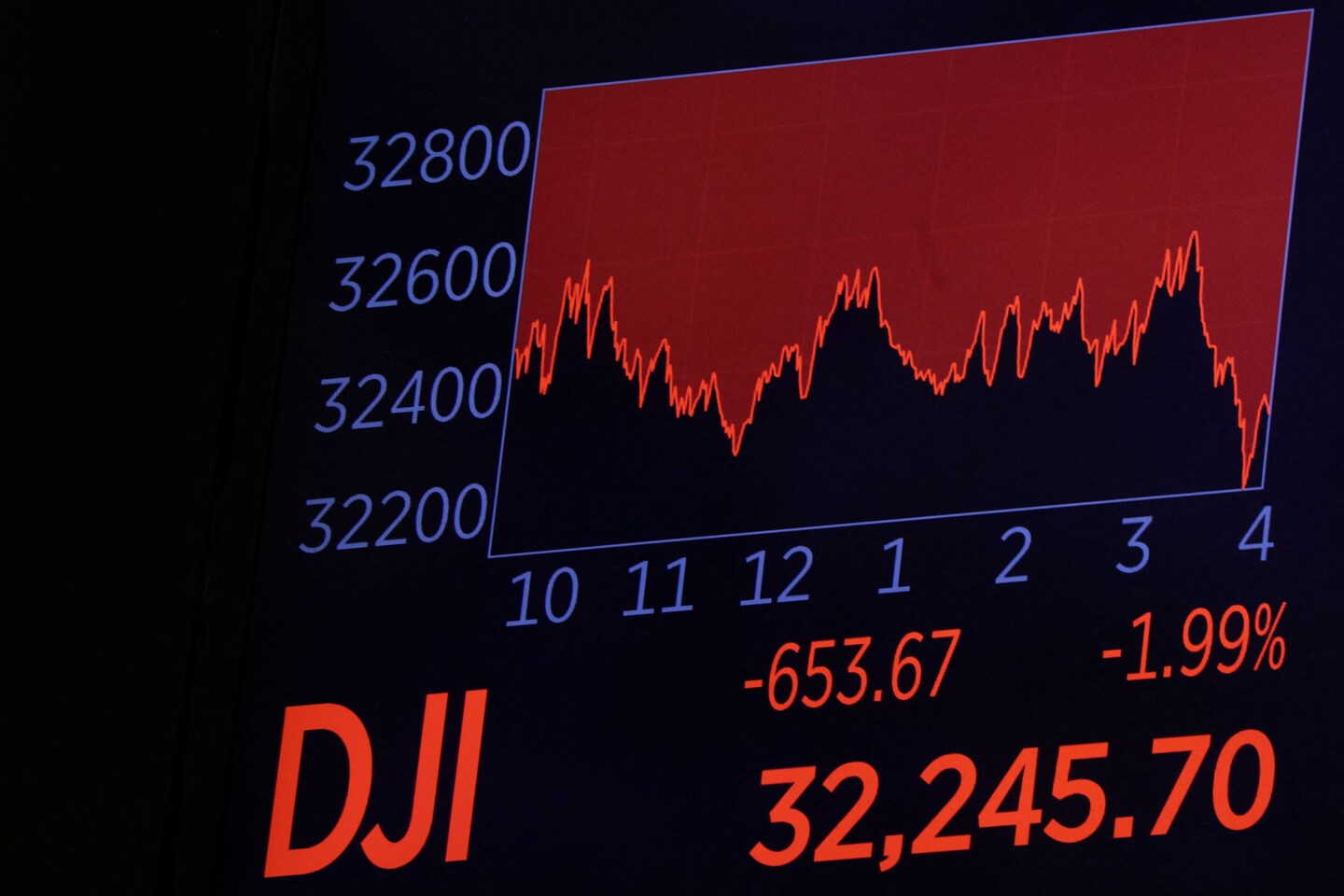“Oh my goodness, what a perfect storm,” said Christine Benz, director of personal finance for Morningstar.
“The markets seem to be worried about a bunch of different factors at once,” she said.
But if you’re concerned about the stock and bond market, then you would be bonkers about what is happening with bitcoin. The world’s leading cryptocurrency dropped to just below $31,000 this week.
That’s a more than 50 percent nosedive from bitcoin’s record high of close to $69,000 late last year.
If individual investors are spooked into selling — locking in their losses — during falling stock and bond prices backed by companies they know and understand, what then can we expect from those contemplating adding the more volatile and misunderstood cryptocurrency to their retirement portfolio?
It’s one of the questions two senators are asking after Fidelity Investments, one of the largest managers of workplace plans, announced it will soon let employers offer bitcoin in their retirement plans.
In setting a ceiling, Fidelity said employers would allow employee contributions in crypto of up to 20 percent per payroll cycle. Investors can have up to 20 percent of their total 401(k) account value in a digital assets account although employers could reduce the percentage workers could invest in bitcoin.
At this moment in time, I think the threshold is too high. If you’re going to speculate in crypto, keep it to about 5 percent of your holdings, some experts I’ve interviewed recommend.
Sen. Elizabeth Warren (D-Mass.) and Sen. Tina Smith (D-Minn.) sent a letter to the chief executive of Fidelity. The senators opened their letter by questioning the appropriateness of the company adding bitcoin to its 401(k) investment plan menu. They are right to be skeptical of an unregulated investment asset.
“Bitcoin’s volatility is compounded by its susceptibility to the whims of just a handful of influencers,” Warren and Smith wrote. “Elon Musk’s tweets alone have led to bitcoin value fluctuations as high as 8 percent.”
The senators want to know how Fidelity will handle the challenge of educating retirement plan participants so that they can make informed investment choices about bitcoin. It’s already a huge hurdle to get people to understand the basics of investing in traditional asset classes.
Fidelity said its Digital Asset Account offering would feature “safeguards including but not limited to, excessive trading oversight, investing limits, transparency, market-leading education.”
“As a company with a 75-year history of putting our customers first, Fidelity shares the [Labor Department’s] and policymakers’ mission of protecting the best interests of retirement savers,” the company said in an emailed statement in response to the letter.
In 2015, a Pew Research Center survey found that although many people had heard of cryptocurrency, just 1 percent of Americans said they had ever collected, traded or used bitcoin.
Last year, another Pew survey found that 16 percent of Americans have invested in, traded or used cryptocurrency. That’s a decent jump, but right now cryptocurrency utility is limited to con artists, crime syndicates and speculators hoping other investors will pay them more than they spent to buy the computer codes.
The blockchain is a digital ledger that keeps track of the cryptocurrency transactions behind bitcoin and its crypto brethren. The technology has tremendous potential. But how much do regular investors understand about the risks of what for now remains an unconventional asset?
“The thing I come back to with crypto is that we can’t pin a value on it,” Benz said. “We don’t have the same history that we have for the other major asset classes. We’re just kind of guessing about how it might behave and who the owners are and who the buyers are.”
Cryptocurrency “can be extraordinarily difficult, even for expert investors, to evaluate these assets and separate the facts from the hype,” the Labor Department wrote in a warning to firms marketing investments in cryptocurrencies to 401(k) plans.
The recent stock market nosedive is a good lesson about the risk of adding cryptocurrencies to 401(k) plans and similar workplace retirement plans.
“It does seem like the assertion that it is some sort of diversifier for stocks is going out the window a little bit day by day because we’re seeing it perform very much in line with the riskiest stocks,” Benz said.
“When you look at the data, investors have a hard enough time amassing assets for retirement using plain vanilla asset classes. If we throw really risky, volatile investments in the mix, it’s hard to imagine that things get a lot better.”
